There are some very simple things we can all do to cut back on our energy usage, save on carbon emissions and save money on our bills.
Here are 12 Energy Saving Tips.
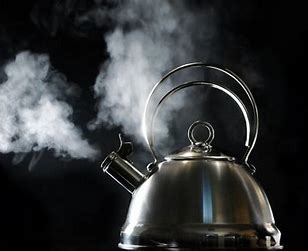
1. Don’t overfill the kettle
Research from 2020 shows that three quarters of households regularly overfill their kettle and, as a result, our bills are in excess of £100 million more than they should be.
A family can easily boil a kettle 10 times a day.
If each time you make a cup of tea or coffee you put in twice as much water as you need, then in a year you could have used about 180 units of electricity and generated about 70 kg of carbon more than necessary– and wasted a lot of money!
Research from 2020 shows that three quarters of households regularly overfill their kettle and, as a result, our bills are in excess of £100 million more than they should be.
A family can easily boil a kettle 10 times a day.
If each time you make a cup of tea or coffee you put in twice as much water as you need, then in a year you could have used about 180 units of electricity and generated about 70 kg of carbon more than necessary– and wasted a lot of money!

2. Turn the tap off when cleaning your teeth
Water companies tell us that, if we let the hot tap run while we clean our teeth, that will waste 13 litres of water a day. As the water is hot that means we are also wasting energy.
A standard boiler will generate about 20g of carbon for every minute it is running.
By turning the tap off while you clean your teeth, you could each be saving over 50 units and 20 kg of carbon (and saving a lot of money!). Maybe more, as this assumes you have a modern efficient gas boiler!
Water companies tell us that, if we let the hot tap run while we clean our teeth, that will waste 13 litres of water a day. As the water is hot that means we are also wasting energy.
A standard boiler will generate about 20g of carbon for every minute it is running.
By turning the tap off while you clean your teeth, you could each be saving over 50 units and 20 kg of carbon (and saving a lot of money!). Maybe more, as this assumes you have a modern efficient gas boiler!

3. Spend less time in the shower
You can make a similar saving by spending just one minute less in the shower.
You can make a similar saving by spending just one minute less in the shower.
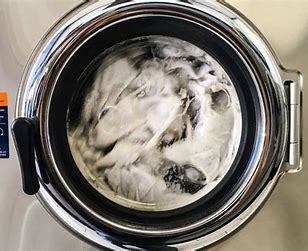
4. Use a lower setting on your washing machine
Most detergents work just as well at 30 degrees C as they do at 40 degrees C so just turning down the temperature on your washing machine can save 100g of carbon per load, which, assuming 5 loads a week, is about 60 units of electricity and 25kg of carbon per year.
You can also save energy by running full loads. Half loads do not save much energy.
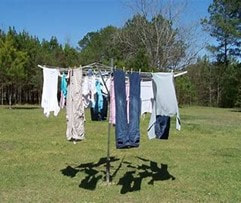
5. Air dry your washing rather than use a tumble dryer.
Much greater savings can be made by drying your clothes without using a tumble dryer. Even the most efficient tumble dryers use an average of about 200 units a year which will generate 80 kg of carbon.
Much greater savings can be made by drying your clothes without using a tumble dryer. Even the most efficient tumble dryers use an average of about 200 units a year which will generate 80 kg of carbon.
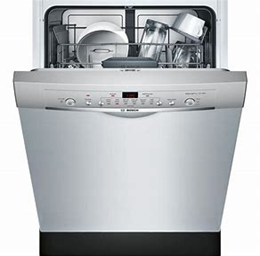
6. Use a 50 degree temperature on your dishwasher.
Dishwashers are sometimes thought to be wasteful but, in fact, this is not necessarily the case. It is possible to wash dishes by hand and use less energy but you have to be extremely careful.
If you leave the hot tap running, for example, then the energy use mounts up very quickly so you would be better much better off using the dishwasher.
A saving can be made by simply turning the temperature down. Using the 50oC setting rather than 65oC can save you 220g of carbon a load. Assuming you run the dish washer every day, this would equate to approximately 200 units of electricity and 80kg of carbon a year.
It is also wise to make sure the dishwasher is full before you use it. One full wash uses less energy than 2 half loads.
Dishwashers are sometimes thought to be wasteful but, in fact, this is not necessarily the case. It is possible to wash dishes by hand and use less energy but you have to be extremely careful.
If you leave the hot tap running, for example, then the energy use mounts up very quickly so you would be better much better off using the dishwasher.
A saving can be made by simply turning the temperature down. Using the 50oC setting rather than 65oC can save you 220g of carbon a load. Assuming you run the dish washer every day, this would equate to approximately 200 units of electricity and 80kg of carbon a year.
It is also wise to make sure the dishwasher is full before you use it. One full wash uses less energy than 2 half loads.

7. Turn off the lights!
Since the introduction of low energy light bulbs, leaving the light on is not quite the problem it used to be. If you leave a new low energy light bulb on, unnecessarily, for an hour then this will only generate 2 or 3 grams of carbon.
Of course, if you are very wasteful and leave half a dozen lights on, unnecessarily, all day, every day, then it all mounts up to 175 units of electricity and 70kg of carbon a year!
7. Turn off the lights!
Since the introduction of low energy light bulbs, leaving the light on is not quite the problem it used to be. If you leave a new low energy light bulb on, unnecessarily, for an hour then this will only generate 2 or 3 grams of carbon.
Of course, if you are very wasteful and leave half a dozen lights on, unnecessarily, all day, every day, then it all mounts up to 175 units of electricity and 70kg of carbon a year!
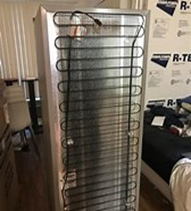
8. Clean the back of your fridge.
Surprisingly, your fridge can become less efficient if you allow the back to become dusty. It is recommended that you hoover the back of the fridge once every 3 months or so (don’t use detergents) and this can save you as much as 30% on your energy consumption.
Even the most efficient fridge freezers can use 250 units a year. A 30% saving is 75 units and 30kg of carbon.

9. Set your boiler to the most efficient temperature
It is recommended that a gas boiler is set to 55degrees for central heating and 60 degrees for hot water. Combi boilers should be set to 50 degrees for heating and 55 degrees for hot water.
It is recommended that a gas boiler is set to 55degrees for central heating and 60 degrees for hot water. Combi boilers should be set to 50 degrees for heating and 55 degrees for hot water.

10. Close your curtains before it gets dark
Closing your curtains at night can reduce heat loss. Closing them before it starts to cool down outside can reduce heat loss by as much as 15%.
Closing your curtains at night can reduce heat loss. Closing them before it starts to cool down outside can reduce heat loss by as much as 15%.
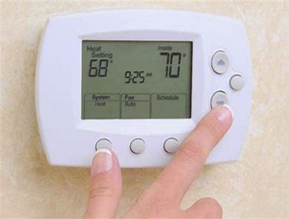
11. Reduce the temperature on your thermostat.
According to British Gas, reducing the temperature by just 1o can save up to 1000 units per year and about 400kg of carbon. It is also more efficient to keep the temperature at a constant level rather than keep allowing it to cool down and then increase it.
According to British Gas, reducing the temperature by just 1o can save up to 1000 units per year and about 400kg of carbon. It is also more efficient to keep the temperature at a constant level rather than keep allowing it to cool down and then increase it.
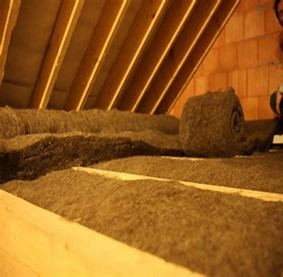
12. Make sure your home is properly insulated
Investing in insulation can save a family a lot of money, and significantly reduce your carbon footprint. Even blocking drafts with home made draft excluders will make a noticeable difference to your bills!
Exact figures will depend upon the individual circumstances of each house but decent insulation in the loft can reduce energy bills by about 10% and insulation for the walls can be even more effective.
Replacing old, drafty single glazed windows and doors with double glazing can also make a major contribution.
According to the Energy Savings Trust properly insulating an average small terrace house will save more than 1250 units a year and 500kg of carbon and an average large, detached house as much as 1750 units and 1500kg of carbon a year. In an average house, replacing single glazed windows and doors with double glazed can save 825 units of electricity and 330kg of carbon a year.
Investing in insulation can save a family a lot of money, and significantly reduce your carbon footprint. Even blocking drafts with home made draft excluders will make a noticeable difference to your bills!
Exact figures will depend upon the individual circumstances of each house but decent insulation in the loft can reduce energy bills by about 10% and insulation for the walls can be even more effective.
Replacing old, drafty single glazed windows and doors with double glazing can also make a major contribution.
According to the Energy Savings Trust properly insulating an average small terrace house will save more than 1250 units a year and 500kg of carbon and an average large, detached house as much as 1750 units and 1500kg of carbon a year. In an average house, replacing single glazed windows and doors with double glazed can save 825 units of electricity and 330kg of carbon a year.
Notes:
The amount of carbon emitted from generating electricity varies according to the way in which it is generated. There is significant variation between different power stations even using the same type of fuel. However, a Parliamentary report makes the general principles clear
Coal produces the most carbon, (800g – 1100g for each unit of electricity). Gas fired power stations produce less carbon (400g - 600g per unit). Other forms of energy generation can produce much less. Solar power averages about 75g for each unit, Wind averages at about 40g and Nuclear 25g for each unit of electricity. (a unit is 1 Kilowatthour)
Coal is being phased out and now accounts for a small percentage of our power generation so, in order to keep things as simple as possible, the calculations that follow will be based on our emissions from gas. So this report makes the assumption that each unit of electricity generates 400g of carbon. The figures quoted are intended as a general guide only.
Proudly powered by Weebly
